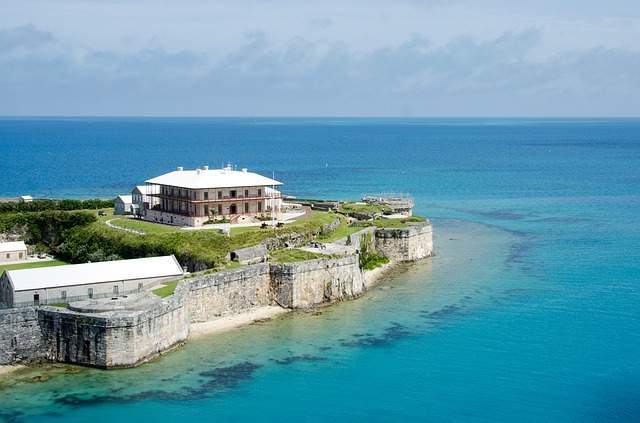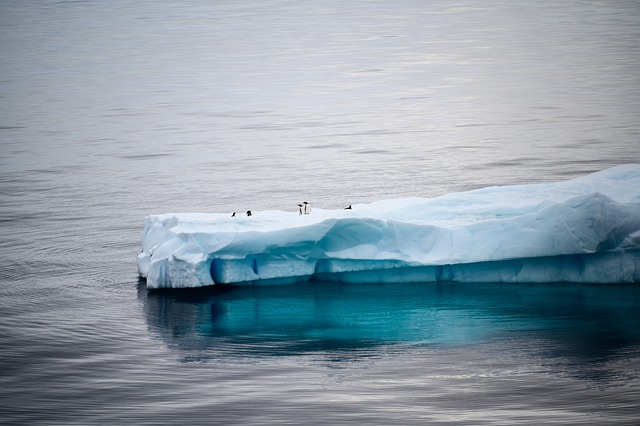The large body of water that surrounds the continents can be termed a single global ocean. However, due to various regional, historical, and scientific reasons, the large global ocean is divided into 5 divisions. These 5 divisions are the 5 oceans of the world.
- Pacific Ocean
- Atlantic Ocean
- Indian Ocean
- Arctic Ocean
- Antarctic Ocean (Southern Ocean)
Oceans of the world
Pacific Ocean
The Pacific Ocean is the largest and deepest ocean in the world. It has an approximate area of 165 million square kilometers (64 million square miles). Ferdinand Magellan, a Portuguese explorer named the ocean “Pacific” because of its relatively calm waters.

The Pacific Ocean extends from the Antarctic ocean (Southern Ocean) in the south to the Arctic Ocean in the north. The Ocean borders Asia and Australia in the west and the American continents (Americas) in the east.
The average depth of the Pacific Ocean is about 4,280 meters (14,040 ft). The deepest oceanic trench in the world, the Mariana trench is located in the Pacific Ocean. The trench has a max depth of about 11,920 meters at Challenger Deep.
The area of the Pacific Ocean is even larger than the total land area on Earth. The Pacific ocean also makes up about 45-46% of the total ocean area on Earth. The Ocean is named the North Pacific Ocean above the equator and South Pacific Ocean below the equator.

Some of the largest seas of the Pacific ocean are the Philippine Sea, Coral Sea, South China sea, etc.
Atlantic Ocean
The Atlantic ocean is the second largest ocean in the world. It has an approximate area of 106.5 million square kilometers (41.1 million square miles) and makes up about 29.5 percent of the total ocean area. The Atlantic Ocean extends from the Arctic Ocean in the north to the Southern Ocean in the south. It is also connected to the Indian ocean in the southeast and the Pacific Ocean in the southwest. The ocean is roughly S-shaped and borders the American continent in the west and Afro-Eurasia in the east.

The Atlantic ocean is the busiest ocean in the world as it connects Western Europe and North America. The average depth of the Atlantic is about 3,646 meters. Many large rivers like Amazon, Congo, Mississippi, etc drain into the Atlantic ocean. The ocean was named Atlantic after the Greek Titan “Atlas”.

Some of the largest seas of the Atlantic ocean are the Sargasso Sea, Mediterranean Sea, Caribbean Sea, etc. The Atlantic Ocean is saltier than the Pacific on average, especially between 10 and 30 degrees latitudes on either side of the equator.
Indian Ocean
The Indian Ocean is the third largest ocean in the world. The area of the Indian ocean is about 71 million square kilometers (27 million square miles) and makes up about 20 % of the total ocean area.
The ocean got its name as it borders the Indian coastline making it the only ocean to be named after a country. The Indian borders South Asia in the north, Africa and Arabian peninsula in the west, Australia and Southeast Asia in the east, and the southern ocean in the South.

The Indian ocean also connects with the Atlantic ocean in the southwest and the Pacific Ocean in the southeast. The average depth of the Indian ocean is 3,740 meters making it even deeper than the Atlantic ocean.

Some of the largest seas of the Indian ocean are the Arabian sea, Bay of Bengal, Andaman sea, etc.
Arctic ocean
The Arctic Ocean is the smallest among all oceans. It has an approximate area of 14 million square kilometers (5.4 million square miles). The Arctic ocean is surrounded by North America, Europe, and Asia. The North Pole lies in the Arctic ocean, the reason why is the coldest ocean. The ocean is almost completely covered with sea ice during the winters in the Northern hemisphere. The Arctic ocean is also the shallowest ocean in the world.

The major marginal seas of the Arctic ocean include Hudson Bay, Baffin Bay, Barents Sea, Beaufort Sea, etc.
Southern Ocean (Antarctic Ocean)
The fifth ocean of the world, the Southern Ocean, also known as the Antarctic Ocean is the second smallest among all oceans.
The Southern Ocean surrounds the continent of Antarctica and is connected with the Pacific, Atlantic, and Indian oceans in the North at 60 degrees South latitude.

In a recent study, it has been found that the Southern Ocean absorbs more carbon than it emits hence lessening the effects of greenhouse gases. The Antarctic ocean waters are home to many whale species including the mighty blue whale and dangerous killer whale.

The major seas of the Southern ocean are the Weddell Sea, Ross Sea, etc.
| Ocean | Approximate Area (million square kilometers) | |
| 1 | Pacific Ocean | 165 |
| 2 | Atlantic ocean | 106.5 |
| 3 | Indian Ocean | 71 |
| 4 | Arctic Ocean | 14 |
| 5 | Southern Ocean (Antarctic Ocean) | 20.3 |
Read more